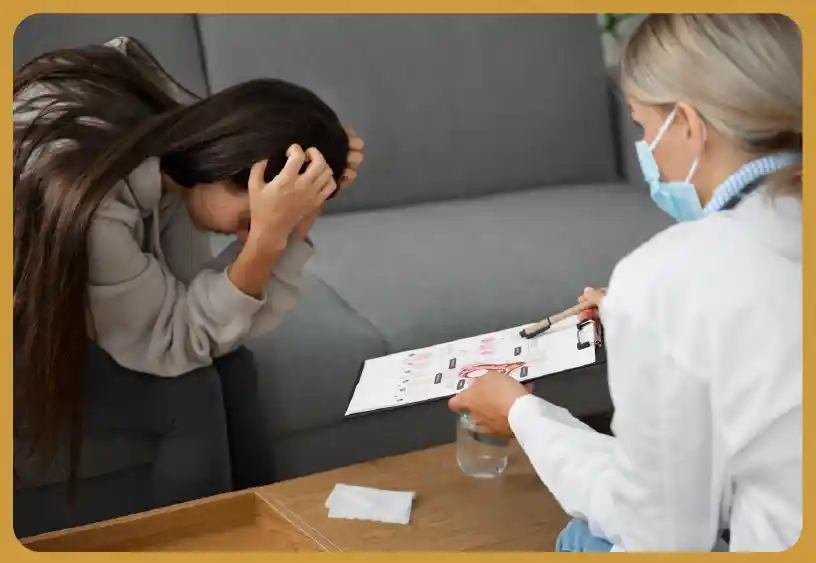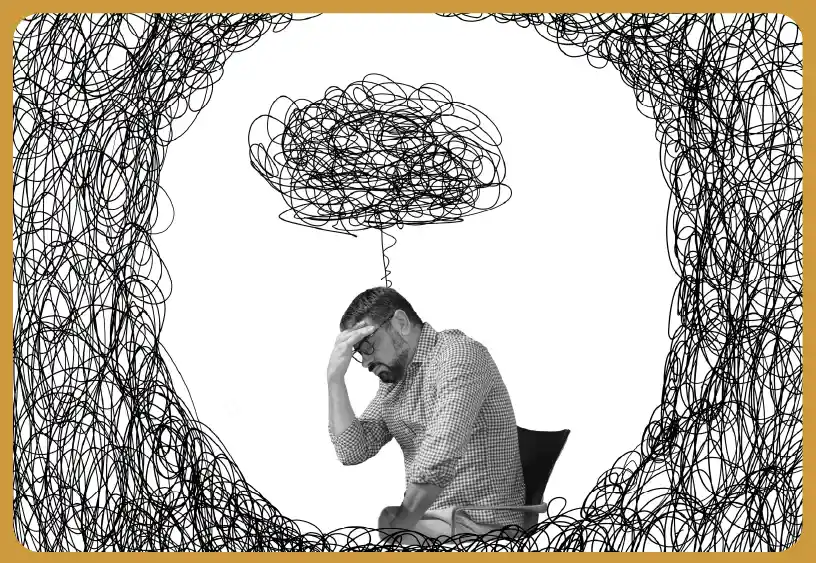
Increasing Cases of Body Dysmorphic Disorder in the UAE: A Growing Concern for Medical
As the times change and society evolves, new psychological disorders arise, or some mental health illnesses become more prevalent than others. One such issue is body dysmorphia. Why is the number of people afflicted with body dysmorphic disorder increasing in the UAE? Let us find out together.
What Exactly is Body Dysmorphic Disorder?
People who have Body Dysmorphic Disorder (BDD) worry a lot about flaws or faults they think they see in their looks that other people don't notice or think aren't important. This obsession causes a lot of stress and makes it hard to do normal things. People with BDD often do the same things over and over, like looking in mirrors, seeking affirmation, grooming too much, or getting cosmetic treatments to fix what they think are their flaws. Neurobiological study shows that BDD may be linked to problems in the parts of the brain that handle vision, like the ventral visual stream and frontostriatal circuits. The serotonin system may also not be working right, which affects mood and obsessive-compulsive behaviors.
What Causes Body Dysmorphic Disorder?
Body Dysmorphic Disorder (BDD) is a complex condition influenced by a combination of biological, psychological, and environmental factors.
Biological Factors
Genes and brain variables may induce Body Dysmorphic Disorder (BDD). Research suggests that those with a family history of BDD or other mental diseases like depression or OCD are more likely to acquire BDD. Brain imaging studies suggest that BDD sufferers have issues with picture comprehension and emotion management. It appears the issue is neurological. Chemical alterations, notably serotonin, have been related to mood and anxiety disorders like BDD. These biological components might cause misperceptions of one's appearance and intense emotional reactions to faults. These are frequent BDD symptoms. Understanding these biological aspects might help scientists develop more targeted therapies like serotonin-altering medicines or neuroimaging-guided exercises to restore brain activity in damaged regions.
Psychological Factors
Mental health difficulties are crucial to BDD development and maintenance. Low self-esteem, a drive to be flawless, or early stress or bullying for appearance may increase BDD risk. False body image beliefs, such as thinking your worth depends on your beauty, can worsen BDD symptoms. These incorrect beliefs sometimes make people overthink their defects and daily issues. BDD sufferers may avoid situations or seek reinforcement to manage appearance-related stress. Understanding these psychological aspects is necessary for cognitive-behavioral treatment (CBT), which questions and changes BDD-related beliefs and behaviors.
Environmental Factors
Sociocultural elements drive BDD progression. Media representations of flawless celebrities and models, as well as other exaggerated beauty standards, can make people dislike their appearance. These incorrect standards might worsen body image issues for those who already struggle. Social pressures to fulfill beauty standards may further increase BDD risk, especially in nations that prioritize appearance. Being mocked, insulted, or bullied over your appearance as a child or teen can also lead to BDD. These environmental variables and genetic and psychological deficiencies affect how people view their appearance and their risk of BDD.
Life Events
Traumatic events like physical or sexual abuse might worsen or initiate BDD symptoms. These incidents can greatly impact self-esteem, body image, and control. Traumatized persons may over groom or get cosmetic surgery to feel in control again. Trauma-related symptoms like over vigilance or avoiding situations may worsen BDD symptoms and make therapy harder. Understanding the role of trauma in BDD development is essential to providing comprehensive care, including trauma-informed treatment that addresses both BDD symptoms and trauma-related issues.
How Can One Treat Body Dysmorphic Disorder?

Treating Body Dysmorphic Disorder (BDD) typically involves a multidisciplinary approach tailored to address the complex biological, psychological, and environmental factors contributing to the disorder. Here's a comprehensive overview of treatment options:
Psychotherapy
Cognitive-behavioral therapy (CBT) is the gold standard for BDD psychotherapy. This structured treatment targets "appearance schemas." or inaccurate views about appearance. Therapists assist clients recognize these views as illogical and build more adaptive appearance beliefs via cognitive restructuring. Exposure and response prevention (ERP) are also part of CBT for BDD. ERP includes gradually exposing appearance-related anxiety triggers and avoiding obsessive behaviors or routines. BDD sufferers can learn to manage suffering and lessen avoidance by facing frightening circumstances and rejecting compulsions. CBT may also teach self-esteem, social skills, and relapse avoidance to preserve therapeutic benefits. Numerous studies have shown that CBT for BDD reduces BDD symptoms and improves functioning.
Medications
BDD is often treated with SSRIs, especially when symptoms are severe or accompanied by sadness or anxiety. SSRIs increase serotonin, a mood-regulating neurotransmitter, which may benefit BDD patients with sadness, anxiety, and obsessive-compulsive symptoms. Medication responses vary, and it may take weeks to months to see meaningful changes. SSRIs and psychotherapy like CBT may work better together. To improve treatment outcomes, doctors monitor drug use, changing doses and evaluating adverse effects. BDD patients should discuss medication concerns and symptoms with their doctors to ensure proper treatment.
Support Groups
BDD sufferers can find validation, understanding, and peer support in support groups and group treatment. Support groups let people discuss BDD challenges, coping methods, and triumphs in a safe environment. Having a supportive community helps alleviate loneliness and stigma connected with mental health issues like BDD. Empathy, counsel, and encouragement from support group members fosters camaraderie and understanding. Group treatment may also include BDD psychoeducation, skill-building, and socializing to improve coping and relationships. Online support groups and forums allow people to connect and obtain resources, especially those who cannot attend in-person gatherings.
Family Therapy
When family dynamics or connections maintain symptoms, BDD patients may benefit from family therapy. Family therapy improves communication, addresses enabling habits, and strengthens family support networks to help the client heal. Therapists help family members understand how their responses to the individual's beauty worries may encourage BDD symptoms. Therapy can minimize family tensions, boost support, and improve coping skills by promoting empathy, understanding, and open communication. Family therapy may include BDD psychoeducation, family dynamics exploration, and problem-solving skills. Therapists may assist family members set limits and encourage supportive reactions that promote independence and recovery when they reassure or accommodate BDD behaviors.
Dermatological or Cosmetic Procedures
BDD sufferers may seek cosmetic or dermatological procedures to improve their look. Healthcare practitioners must carefully evaluate these procedures and test for BDD symptoms. Cosmetic procedures that encourage BDD-related maladaptive thoughts or behaviors should be avoided. Mental health specialists are vital in assessing cosmetic procedure motives and educating patients about risks and advantages. Mental health and medical specialists collaborate to ensure treatment options match the individual's well-being and recovery objectives. Coordination between healthcare practitioners helps guarantee complete care for mental health and cosmetic problems when cosmetic procedures are warranted.
Educational Interventions
BDD patients and their families need accurate information on the disorder, its symptoms, and treatment choices. Education shows people that BDD is a mental illness, not a vanity or self-centeredness issue. Psychoeducation minimizes stigma and promotes help-seeking by raising awareness of BDD. Education helps people spot BDD symptoms in themselves and others, enabling early discovery and treatment. Educational treatments may include covering healthy body image, media literacy, and coping with appearance demands. Educational treatments increase BDD treatment results and quality of life by developing understanding and supportive surroundings.
Collaborative Care
Mental health experts, primary care doctors, dermatologists, and other specialists work together to treat BDD. This multidisciplinary approach tackles the disorder's complex biological, psychological, and environmental causes. Mental health experts analyze, develop, and monitor therapy while working with other healthcare providers to meet the patient's requirements. Primary care professionals help identify and recommend BDD patients for mental health treatment and manage comorbidities. Dermatologists and other experts evaluate cosmetic procedures alongside mental health doctors to provide integrated care. Collaborative care improves BDD treatment results and holistic recovery by improving healthcare provider communication and collaboration.
Zivanza Is Always Here To Help You
If you are looking for a trustworthy psychologist to help you or your loved one get over mental health illnesses, Zivanza Wellness can be a great choice. Our expert team of psychiatrists and psychologists offers you a safe space to open up and provide you with practical methods and guidance to overcome any form of mental health issues.

- Share














